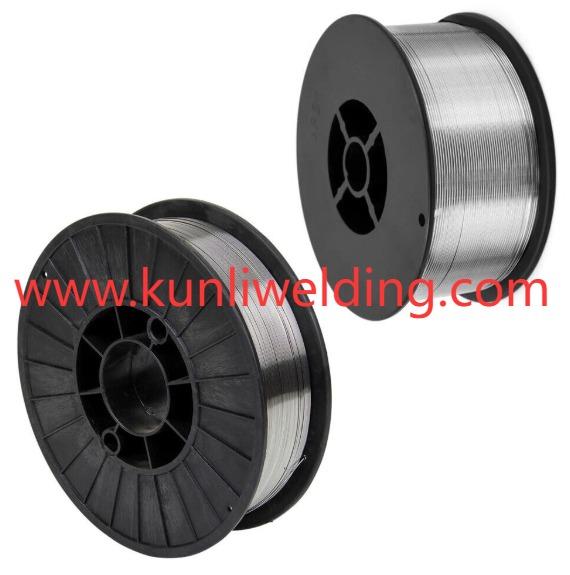When Does Filler Choice Outweigh Changes In Joint Design For Strength

Lightweight design priorities and tougher service demands have pushed fabricators to rethink filler choices for structures that must carry load and resist harsh environments, and Aluminum Welding Wire ER5087 often enters that conversation as a candidate when joining a particular marine grade of aluminum. In applications where weld strength and long term durability matter, understanding how this filler behaves can change repair routines and design decisions on the shop floor.
ER5087 owes its appeal to a focused alloy profile that increases weld metal strength while keeping good weldability and reasonable fluidity. That balance helps welders produce deposits that resist the kinds of fatigue and stress that assemblies face at sea and in coastal installations. Suppliers position this wire for applications where joining engineers need a filler that supports structural integrity without adding complexity to standard welding methods.
From the metallurgical perspective a modest magnesium enhancement in the filler acts on the solidified weld metal to deliver higher tensile performance and improved resistance to cyclic loads. For workshops that build hulls frames and load bearing components this improved deposit strength translates into joints that withstand repeated service cycles with fewer worry points for crack initiation. Those operational benefits are especially relevant where maintenance access is limited and where minimizing returns to the bench saves time and cost.
Weldability remains a practical concern on every job. ER5087 is formulated so it can be used with common joining processes while producing a stable arc and manageable bead appearance. That predictability reduces the time spent on touch up and on corrective grinding before protective treatments are applied. When fabricators balance automated feeding stations and manual finishing crews, the filler's steady behavior across both modes helps keep assembly sequences moving and reduces handoff friction between teams.
Corrosion resistance is another axis of value in marine and near shore structures. The filler's composition contributes to weld surfaces that hold up under salt spray and humidity when paired with appropriate post weld protection. For operators responsible for fleet maintenance a filler that supports both strength and surface stability lowers the frequency of intervention and eases repaint and sealant work after repair. Including corrosion performance in filler selection is an increasingly common procurement requirement.
Fit up and thermal control remain decisive in whether any filler shows its potential. Using a wire that offers stronger as welded deposits does not replace good joint design and disciplined heat input. Controlling travel speed interpass conditions and clamping helps keep shrinkage paths predictable and reduces distortion that complicates downstream assembly. Where teams document a welding procedure and validate it on representative parts, the combination of process and wire delivers repeatable mechanical outcomes in production and in the field.
Repair workflows benefit from the filler's attributes because stronger weld metal reduces the likelihood that a repaired area will require repeated attention. Field crews that prioritize quick return to service value fillers that make it easier to restore geometry and to produce a surface ready for coating without lengthy rework. That result supports operational goals to keep assets available and to reduce time spent in repair bays.
Procurement and supply considerations weigh on adoption. When supply chains are uncertain, buyers favor suppliers who provide clear product notes on recommended uses handling advice and packaging that protects the spool during transit. Practical supplier guidance shortens qualification cycles and makes it easier for shops to run the representative trials that confirm the wire behaves in their machines and with their finishing regimen. That predictability reduces the risk of surprises when a new spool is first mounted on an automated feeder or when a field crew opens a sealed package.
Testing remains the single most convincing step for teams deciding whether to switch fillers. Run sample welds on the same base metal and in the same joint geometry you plan to use in production. Examine bead morphology assess fusion quality and evaluate how much dressing and surface preparation the joint needs before protective coatings. Those hands on checks show whether the filler's strength advantages translate into lower rework and more consistent outputs for your specific assemblies.
Designers, welders and procurement professionals who align on the selection workflow usually see the quickest returns. Include supplier handling notes in the purchase order stage and require a short acceptance protocol that mirrors production. When a wire consistently arrives in protected packaging and feeds as expected, shops avoid the kind of downtime that shows up as hidden cost during busy campaigns.
ER5087 can be a pragmatic choice for fabricators and repair teams that need stronger as welded deposits in marine grade aluminum work while keeping routine welding practices familiar. When engineering choices, welding procedure and supplier handling are aligned, the filler contributes directly to more robust joints and to smoother finishing steps. For readers who want to review the manufacturer's product notes and application guidance visit the news and resource area at www.kunliwelding.com .
- Art
- Causes
- Crafts
- Dance
- Drinks
- Film
- Fitness
- Food
- Games
- Gardening
- Health
- Home
- Literature
- Music
- Networking
- Other
- Party
- Religion
- Shopping
- Sports
- Theater
- Wellness


